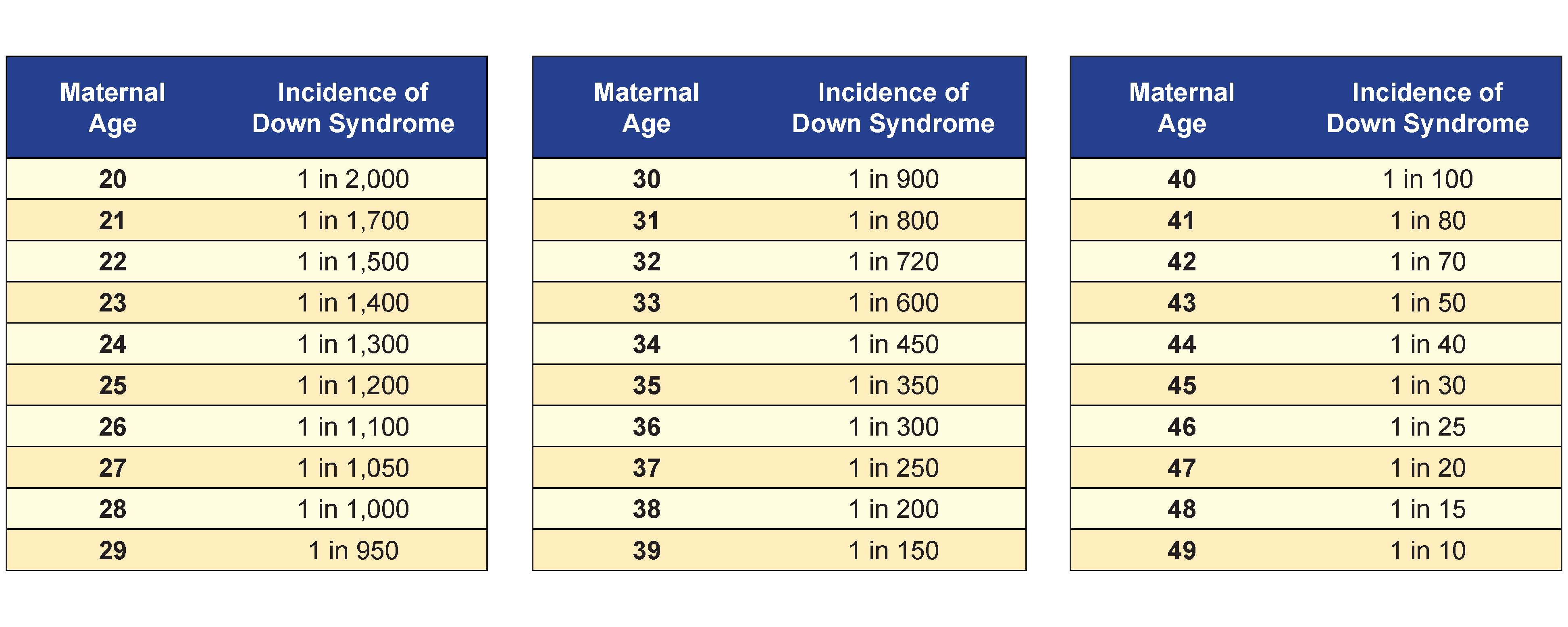FREQUENTLY ASKED QUESTIONS
What is Down Syndrome?
Down syndrome or Down’s syndrome, also known as Trisomy 21, is a genetic condition caused by the presence of all or part of a third copy of chromosome 21. It is usually associated with physical growth delays, mild to moderate intellectual disability, and characteristic facial features. The average IQ of a young adult with Down syndrome is 50, equivalent to the mental ability of an 8- or 9-year-old child, but this can vary widely.
Despite the fact that the parents of the affected individuals are usually genetically normal, the probability of having a child with Down’s syndrome increases from less than 0.1% in 20-year-old mothers to 3% in those of age 45. The extra chromosome is believed to occur by chance, with no known behavioral activity or environmental factor that changes the probability.
Down syndrome is one of the most common chromosome conditions in humans. It occurs in about 1 in 1,000 babies born each year and as of 2015, Down syndrome was present in 5.4 million individuals globally.
The disorder was named after British doctor John Langdon Down, who fully described the syndrome in 1866
How do you Identify someone with Down Syndrome?
Children and adults with Down syndrome have distinct facial features. Though not all people with Down syndrome have the same features, some of the more common features include:
- Flattened face
- Small head
- Short neck
- Protruding tongue
- Upward slanting eye lids (palpebral fissures)
- Unusually shaped or small ears
- Poor muscle tone
- Broad, short hands with a single crease in the palm
- Relatively short fingers and small hands and feet
- Excessive flexibility
- Tiny white spots on the colored part (iris) of the eye called Brushfield’s spots
- Short height
Infants with Down syndrome may be average size, but typically they grow slowly and remain shorter than other children the same age.
What causes Down Syndrome?
Human cells normally contain 23 pairs of chromosomes. One chromosome in each pair comes from your father, the other from your mother.
Down syndrome results when abnormal cell division involving chromosome 21 occurs. These cell division abnormalities result in an extra partial or full chromosome 21. This extra genetic material is responsible for the characteristic features and developmental problems of Down syndrome. Any one of three genetic variations can cause Down syndrome:
- Trisomy 21. About 95 percent of the time, Down syndrome is caused by trisomy 21 — the person has three copies of chromosome 21, instead of the usual two copies, in all cells. This is caused by abnormal cell division during the development of the sperm cell or the egg cell.
- Mosaic Down syndrome. This type of Down Syndrome accounts for only one percent (1%) of people living with Down Syndrome. In this rare form of Down syndrome, a person has only some cells with an extra copy of chromosome 21. This mosaic of normal and abnormal cells is caused by abnormal cell division after fertilization.
- Translocation Down syndrome. This accounts for four percent (1%) of people living with Down Syndrome. It can also occur when a portion of chromosome 21 becomes attached (translocated) onto another chromosome, before or at conception. These children have the usual two copies of chromosome 21, but they also have additional genetic material from chromosome 21 attached to another chromosome.
There are no known behavioral or environmental factors that cause Down syndrome.
How do you manage someone with Down Syndrome?
Down Syndrome is a life-long condition. However, early intervention can create a big difference in the lives of people with down syndrome. Some of these interventions include:
- Speech therapy to ease communication.
- Physical therapy to help strengthen muscles and improve motor skills
- Occupational therapy to help refine motor skills and make daily tasks easier.
- Behavioral therapy to help manage emotional challenges that can come with Down Syndrome.
What is the Likelihood of Having a Child with Down Syndrome?
Down syndrome can occur in all kinds of people in different economic levels, though older women have an increased chance of having a child with Down syndrome. A 35 year old woman has about a 1 in 350 chance of conceiving a child with Down syndrome, and this chance increases gradually to 1 in 100 by age 40. At age 45 the incidence becomes approximately 1 in 30. The age of the mother does not seem to be linked to the risk of translocation.
Since many Ugandan couples in this generation are postponing parenting until later in life, the incidence of Down syndrome conceptions is expected to increase. Therefore, genetic counseling for parents is becoming increasingly important. Still, many medical workers are not fully informed about advising their patients about the incidences of Down syndrome, advancements in diagnosis, and the protocols for care and treatment of babies born with Down syndrome.

